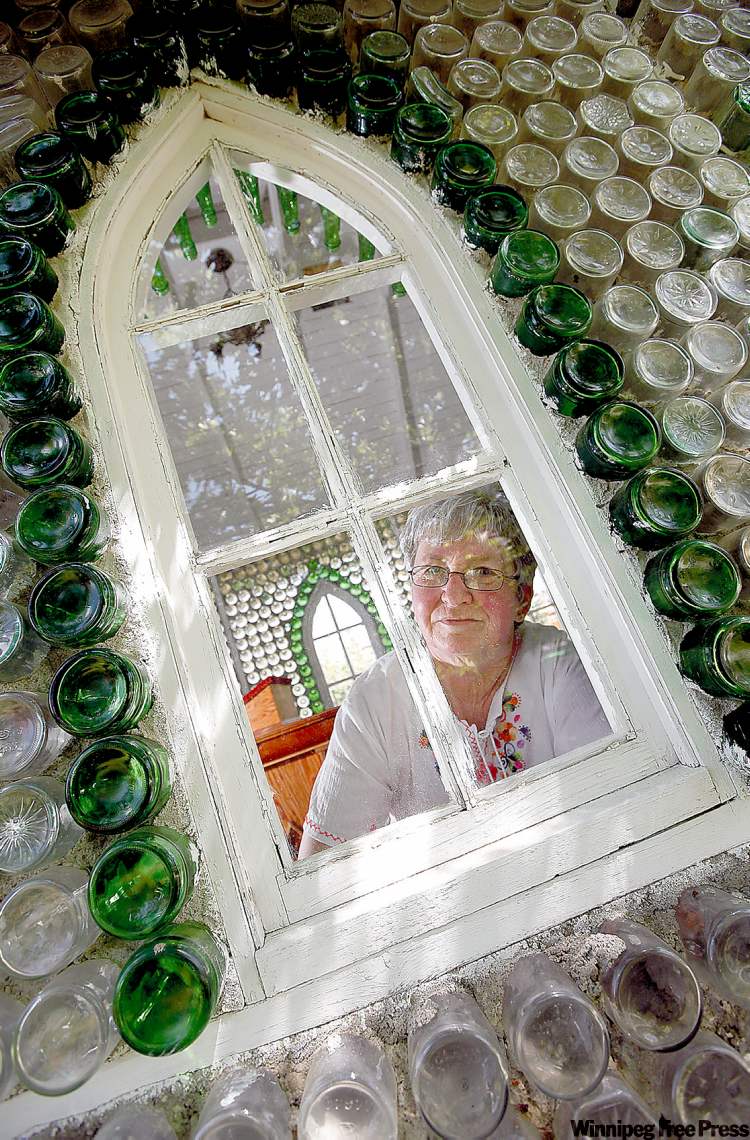Bottle buildings toast of Treherne
Late farmer's glass constructions carefully moved to site in town
Advertisement
Read this article for free:
or
Already have an account? Log in here »
We need your support!
Local journalism needs your support!
As we navigate through unprecedented times, our journalists are working harder than ever to bring you the latest local updates to keep you safe and informed.
Now, more than ever, we need your support.
Starting at $15.99 plus taxes every four weeks you can access your Brandon Sun online and full access to all content as it appears on our website.
Subscribe Nowor call circulation directly at (204) 727-0527.
Your pledge helps to ensure we provide the news that matters most to your community!
To continue reading, please subscribe:
Add Brandon Sun access to your Winnipeg Free Press subscription for only
$1 for the first 4 weeks*
*$1 will be added to your next bill. After your 4 weeks access is complete your rate will increase by $4.99 a X percent off the regular rate.
Read unlimited articles for free today:
or
Already have an account? Log in here »
Hey there, time traveller!
This article was published 28/05/2010 (5606 days ago), so information in it may no longer be current.
TREHERNE — If there’s a criticism people had of the late Bob Cain of Treherne, it’s that he tended to bottle things up.
Like the one-room farmhouse he bottled up out of 4,000 glass bottles.
Or the eight-seater church, where weddings are still held today, that he built out of 5,000 bottles.

Or the outhouse he made out of 1,000 bottles.
"They had so many people visiting their farm to see the bottle buildings, and people would ask if they could use the washroom," explained Pat Sparling, community development officer for the Treherne area.
So instead of people trooping in and out of Cain’s house, he built a glass outhouse. Cain’s son, Joe, a plumber, installed running water and a sink. The glass is thick enough that you can’t see in.
Up to 5,000 visitors per year, including as many as 15 bus tour groups, visited Bob and Dora Cain’s farm each year.
The bottle buildings are now on display in the town of Treherne, about 110 kilometres southwest of Winnipeg. But it took an extremely delicate moving operation to transport them from the Cain farm in 2007, a year after Bob died.
Whatever you do, don’t drop them, the town advised mover J.B. Andrews, who’d been coaxed out of retirement to accept the challenge. Otherwise, people would be picking up shards of glass for long after the Mayan calendar. (The RM of South Norfolk also helped with funding the move and beautifying the new site in town.)

Cain started building his glass houses in retirement in the early 1980s, but didn’t work alone. Friend Fred Harp worked alongside. Bob’s wife, Dora, soaked the bottles to remove the labels. They were all liquor bottles. Of course, the bottles would float. So she had to fill each bottle with water first.
An assist goes to the patrons of the Roblin Boulevard Legion. Cain once said 90 per cent of his bottles came from there, delivered by custodian Bill Smith. Other bottles were obtained from socials in the Treherne area.
As amazing as it is to think of Cain and Harp meticulously putting all those thousands of bottles together, it’s almost as amazing to think of all the liquor consumed to empty those bottles.
Cain once confided to a newspaper that he was "a slow sipper," which seems to indicate one who savoured his alcohol and regulated consumption carefully. In other words, he didn’t look at life from the bottom of a bottle, even if that’s what you see looking at his glass buildings.
"He was just a really happy guy," said Sparling. He farmed and drove a fuel delivery truck.
Seagram’s Five-Star whiskey bottles were the favoured medium, held together by a concrete mortar. The 26-ounce bottles made excellent building blocks because of their rectangular shape.

But there are all kinds of bottles. Many are dark-green wine bottles, as well as the rusty brown kind from Liebfraumilch. One can spot distinctly recognizable bottles, like from Wiser’s rye whiskey and Lamb’s and Bacardi rum. The spindles on the church railing are made from Kahlua bottles.
The community raised $43,000 to move the buildings and landscape their new premises at the corner of Railway and Alexander streets in Treherne. The display open Tuesday through Sunday, from 4 p.m. to 7 p.m. until June 21. After that, it’s open daily from 11 a.m to 7 p.m. for the rest of the summer. Admission is $3.
bill.redekop@freepress.mb.ca
